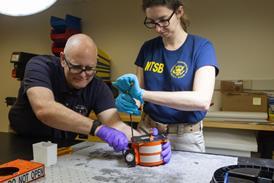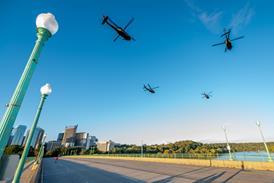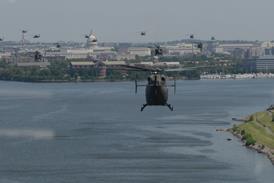US industry is pushing for development of a vertical flight infrastructure that will permit simultaneous non-interfering operations by fixed and rotary wing aircraft. A white paper drafted jointly by the American Helicopter Society (AHS) and the Helicopter Association International (HAI) was discussed at the HAI show in mid-February and will be presented to the US Federal Aviation Administration, says AHS executive director Rhett Flater.
The draft white paper recommends the creation of a Government/industry integrated product team to develop air and ground infrastructure for rotorcraft operations. The team would be tasked with completing within 12 months, using available resources, the initial infrastructure elements allowing simultaneous non-interfering operations. These include:
terminal procedures for precision approaches using the differential global positioning system; a global positioning system (GPS) waypoint grid for rotorcraft operations in the Gulf of Mexico; a GPS based low altitude instrument flight rules route structure in the north-east USA; criteria for reducing route widths using GPS.The draft white paper also sets goals to be completed within 24 months. These include developing approach criteria specific to tilt-rotors, and establishing criteria allowing high fidelity flight simulators to be used to validate rotorcraft approach procedures. The AHSand HAI argue that current USairspace infrastructure, designed for fixed wing requirements, does not "recognise the three-dimensional flight capabilities and flexibility of the helicopter".
Source: Flight International























